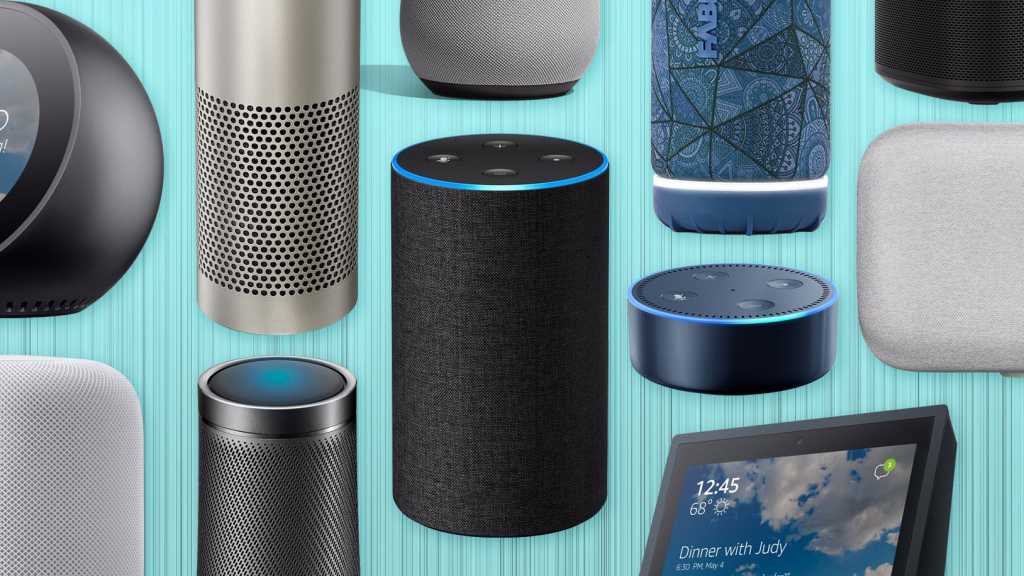You don’t need to live in a smart home to benefit from smart speakers and smart displays. Alexa, Google Assistant, Siri, and other digital assistants can help you in dozens of ways, and you don’t have to lift a finger to summon them—just speak their names.
Here are our top picks in several categories. Looking for more guidance beyond our top recommendations? Scroll down the page to our in-depth buyers’ guide.
Updated September 18, 2023 to add a link to our Sonos Move 2 review.
Amazon Echo Dot with Clock (5th Gen) — Best smart speaker for most people
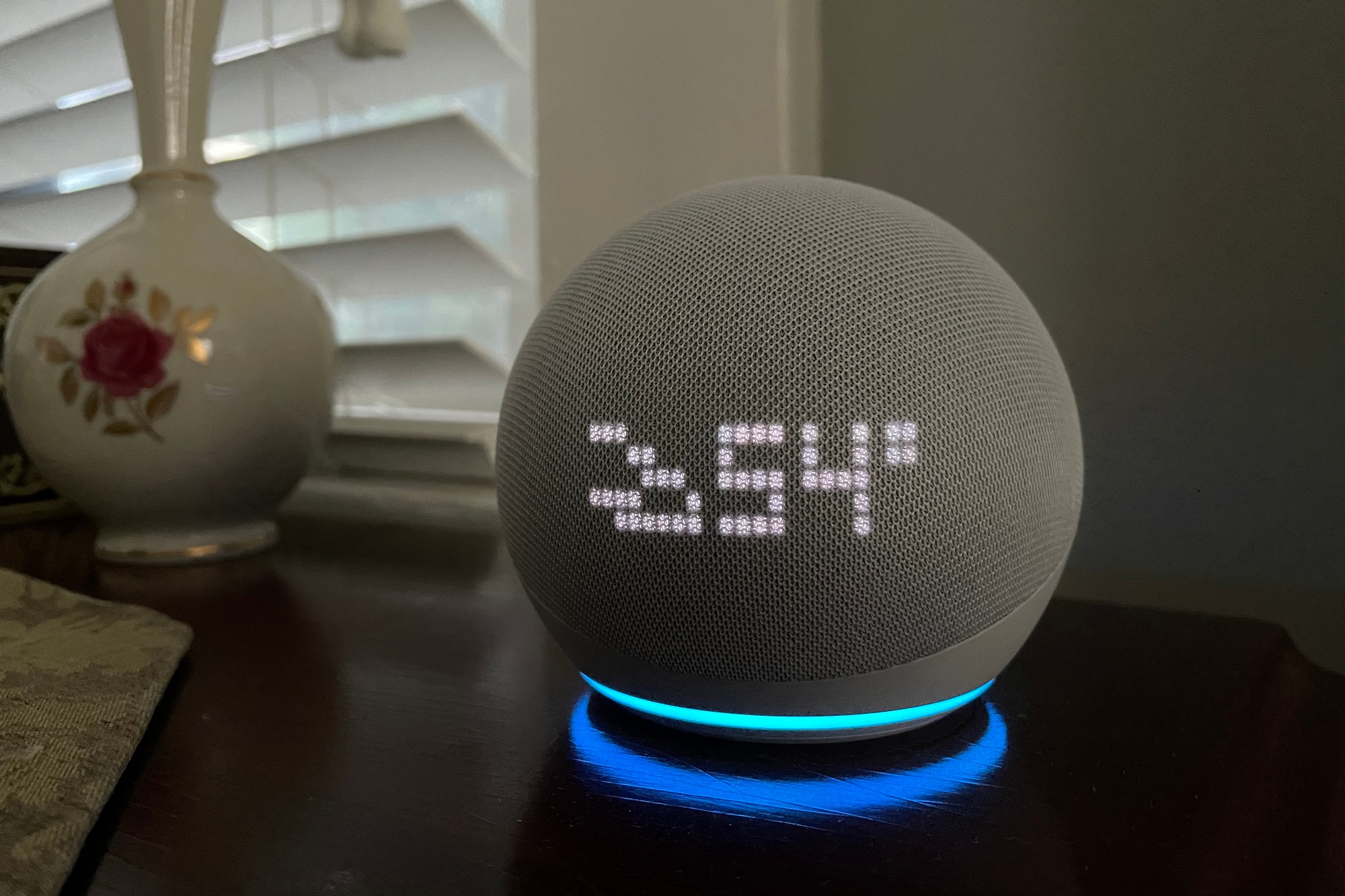
Pros
- Larger display conveys more information
- Highly useful ambient temperature sensor
- Accelerometer for gesture recognition
- Can operate as a node on an Eero mesh Wi-Fi network
Cons
- Audio performance still pales in comparison to a Sonos One
- 3.5mm analog audio output has been removed
- Mesh node feature is useful only to those with Eero routers
Amazon is the strongest player in the smart home market today, and the Echo Dot with Clock (5th Gen) is a key reason for that position. Amazon could easily have left well enough alone with its third-generation entry-level smart speaker, but it just keeps innovating. While it’s true that you’ll spend $10 less if you buy the 5th-generation Echo Dot sans clock, that display adds much more than $10 in value. The one area that Amazon continues to trail with its entry-level smart speakers is audio performance. But if you’re buying a smart speaker mostly to control your smart home devices, this is the smart speaker to buy.
Google Nest Mini — Best smart speaker for most people, runner-up
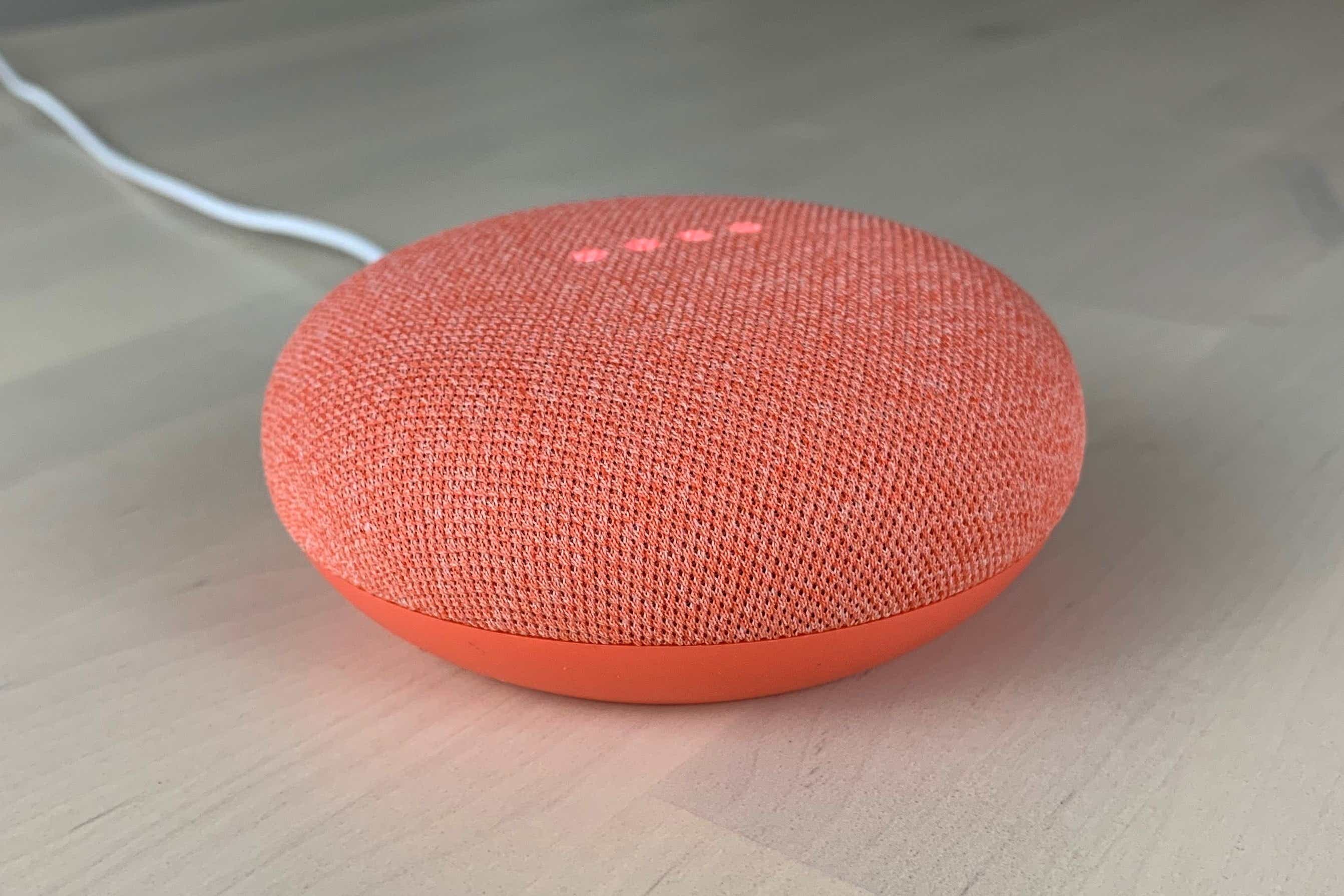
Pros
- Improved sound quality
- Google Assistant rarely gets stumped
- Works great with other Nest devices
- Inexpensive
Cons
- Capacitive buttons are easy to miss
- Sound quality still isn’t that great
- No cable management to go with the new mounting hole
- No analog audio output
Google takes the runner-up spot despite the improvements the company has made to its rebranded smart speaker. Yes, audio quality has improved, and Google Assistant is still smarter than Alexa, but Amazon is ahead of the game when it comes to hooks into the smart home. If you want better audio performance, the Google Nest Audio delivers a lot of bang for the buck, but it costs twice as much as the Mini. The Nest Mini’s price also makes it the runner-up in the best budget-priced smart speaker category.
Apple HomePod mini — Best smart speaker in the Apple HomeKit ecosystem
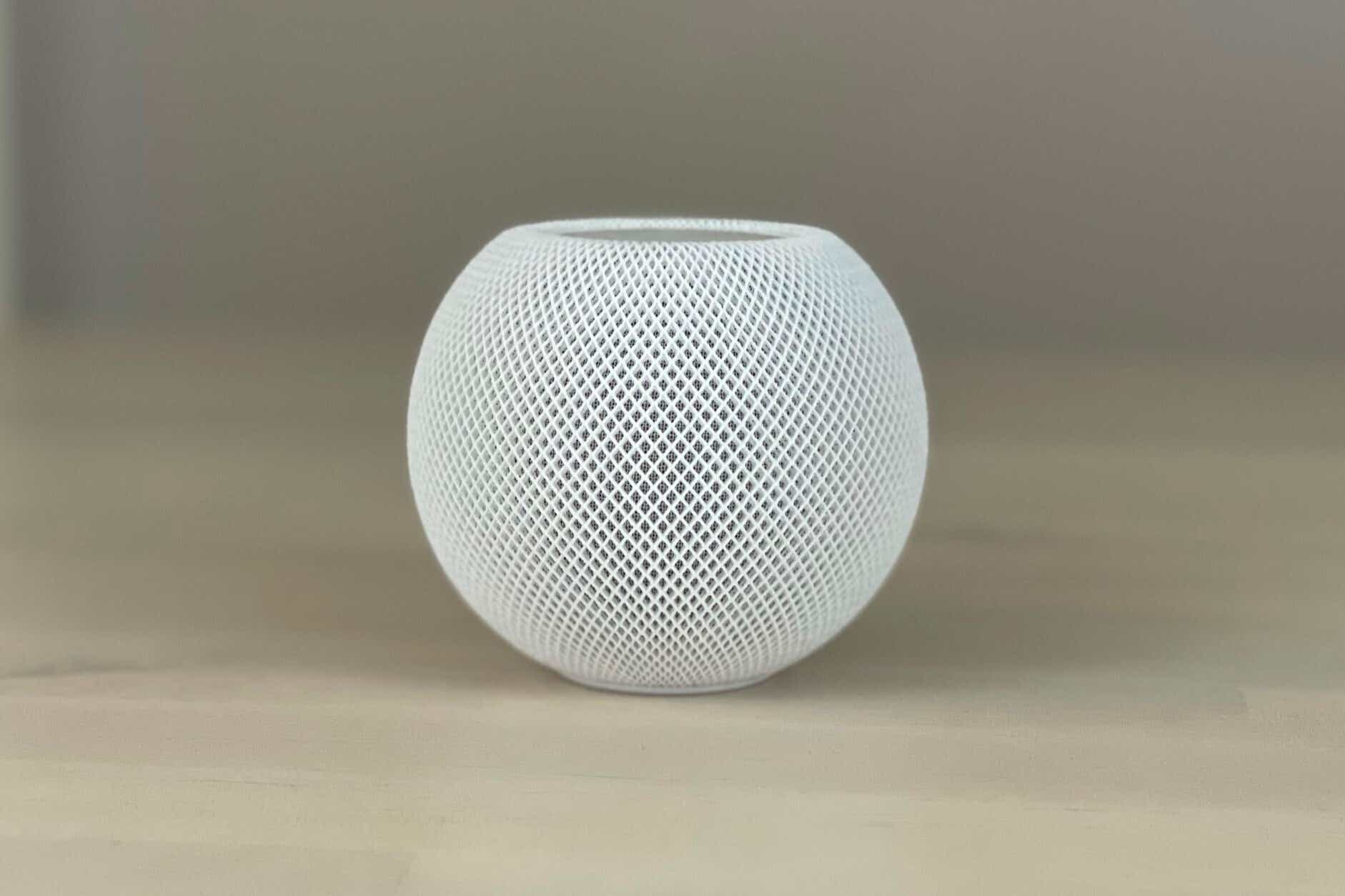
Pros
- Impressive audio quality for its size
- Easy setup
- Works as a Thread border router for Matter
- “Intercom” feature lets you broadcast messages to family members
- Temperature and humidity sensor was recently added, along with sound recognition for smoke alarms
Cons
- No physical mic mute control
- Intercom doesn’t support two-way calls
- Supports third-party music services, but only a few are on board
- We’ve heard better-sounding smart speakers in the Mini’s price range
- Still pricey
A series of post-launch updates has turned the smaller HomePod into a much more capable smart speaker. Even with its lofty price tag, the HomePod mini is a worth investment, particularly for Apple users. The larger HomePod (2nd generation) is still too expensive.
Amazon Echo Dot (3rd gen) — Best budget-priced smart speaker
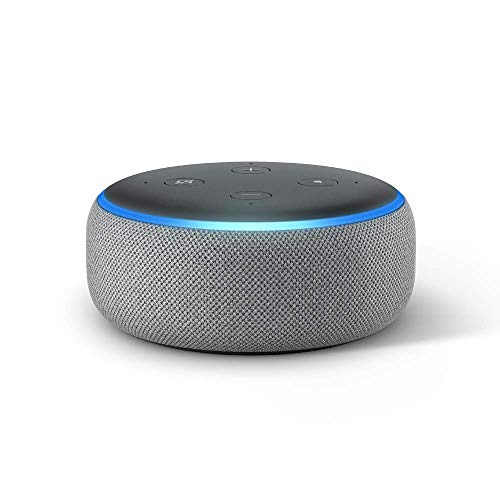
Pros
- A very inexpensive voice-powered smart home controller
- Best sounding audio in its class
- Pretty industrial design
Cons
- Still not recommended for critical music listening
- Google Nest Mini offers tighter integration with Android smartphones
We don’t know how much longer the third-gen Dot will be around, but if you’re looking for an inexpensive Alexa-powered smart speaker, this is the model to buy. If you’re looking for a budget-priced smart speaker based on Google Assistant, you can’t go wrong with the the Nest Mini, mentioned above as our overall runner-up.
Bowers & Wilkins Zeppelin — Best smart speaker for music
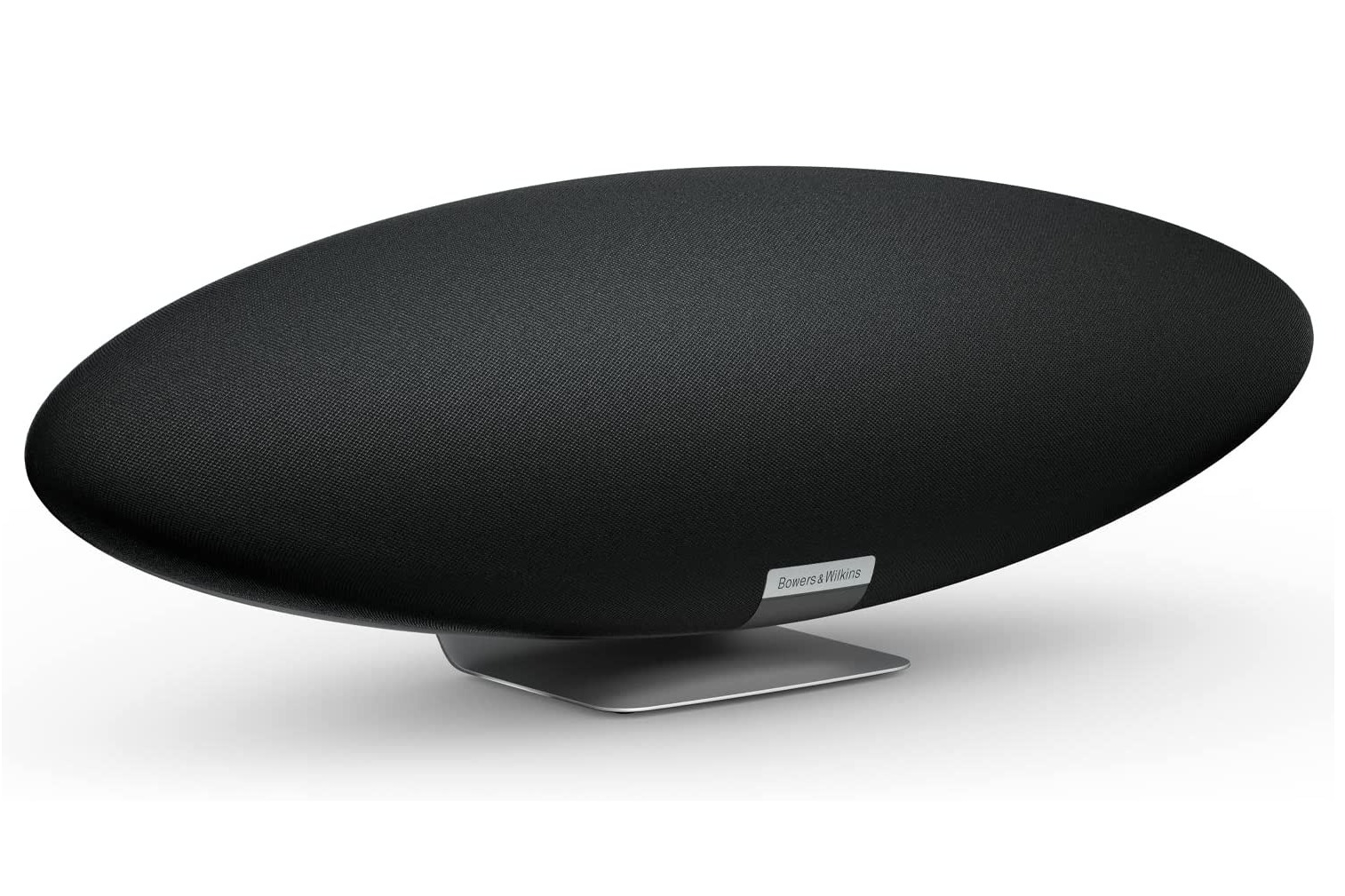
Pros
- Best-in-class stereo performance from a tabletop speaker
- Impeccable industrial design
- Streams high-res audio
Cons
- Alexa is the only supported digital assistant
- Control buttons are difficult to see
If you’ve got the bread, Bowers & Wilkins has the best-sounding smart speaker on the market. It only supports Alexa, though, so Google Assistant fans might want to look elsewhere. The Nest Audio sounds good for a $99 speaker, but as you would expect, it is just not in the same league as this puppy.
Sonos Era 100 — Best smart speaker for music, runner-up
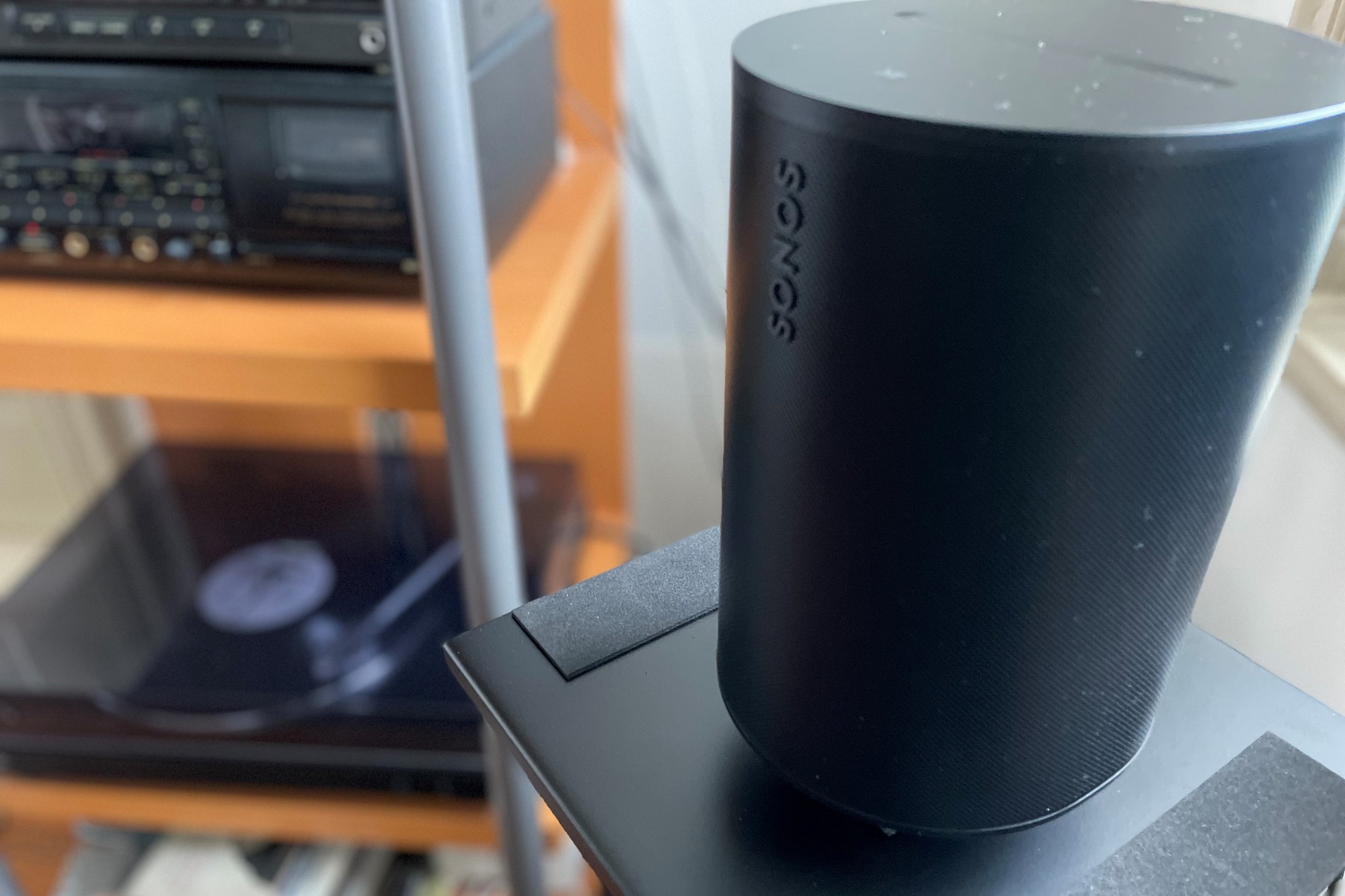
Pros
- Honest, full bodied, stress-free sound
- Unusually well carved bass, natural-sounding mids, and whistle-clean highs
- A great smart speaker with either Amazon Alexa or Sonos Voice
- No one does multi-room audio better than Sonos
Cons
- No support for Google Assistant
- You might need two to fill your listening space
- Lacks the channel preset buttons found on some competing speakers
- Optional accessory required to get line-level input and/or hardwired ethernet connectivity
The Sonos Era 100 is the best-sounding compact streaming smart speaker we’ve encountered; by itself, as a stereo pair, or performing as the rear surround channels with a Sonos soundbar.
Sonos Era 300 — Best smart speaker for spatial audio

Pros
- Dramatic, embracing, and exotic sound from a shockingly small package
- A great smart speaker with Amazon Alexa and Sonos Voice
- Bluetooth and Wi-Fi connectivity
Cons
- Doesn't support Google Assistant
- Trueplay Advanced Tuning depends on an iOS device; cross-platform Quick Tune isn't as effective
The Sonos Era 300 is a party animal that delivers an exciting, atmospheric take on surround sound, by itself, in a pair, or as the surround channels reinforcing a Sonos soundbar.
Amazon Echo Studio — Best smart speaker for spatial audio, runner-up
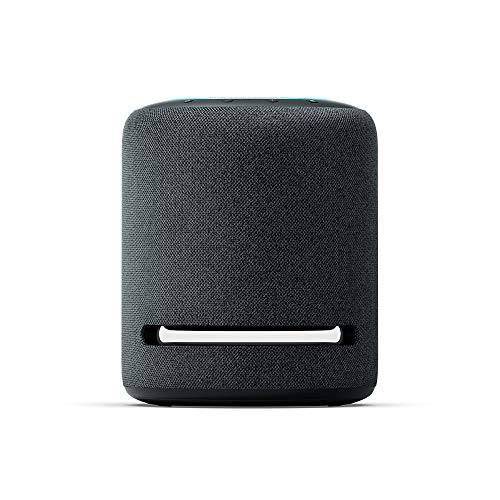
Pros
- Great audio performance for the money
- Supports 3D audio (Dolby Atmos and Sony 360 Reality Audio)
- Can be paired with Amazon’s inexpensive subwoofer and/or a second Studio for stereo
Cons
- Lack of Z-Wave support weakens its abilities as a smart home hub
- You must subscribe to Amazon Music to get 3D audio
- Speaker enclosure is insufficently isolated from the surface it’s placed on
Amazon’s Echo Studio is a great value for $200, and it has an integrated Zigbee smart home hub to boot. It’s outfitted with three 2.0-inch mid-range drivers (one firing left, one firing right, and one firing straight up) and a 1.0-inch tweeter that fires straight at the listener. A 5.25-inch down-firing woofer handles the lower frequencies and is mounted directly above a slotted bass aperture. You can pair two for stereo, and Amazon even offers an optional subwoofer.
Sonos Roam — Best portable smart speaker
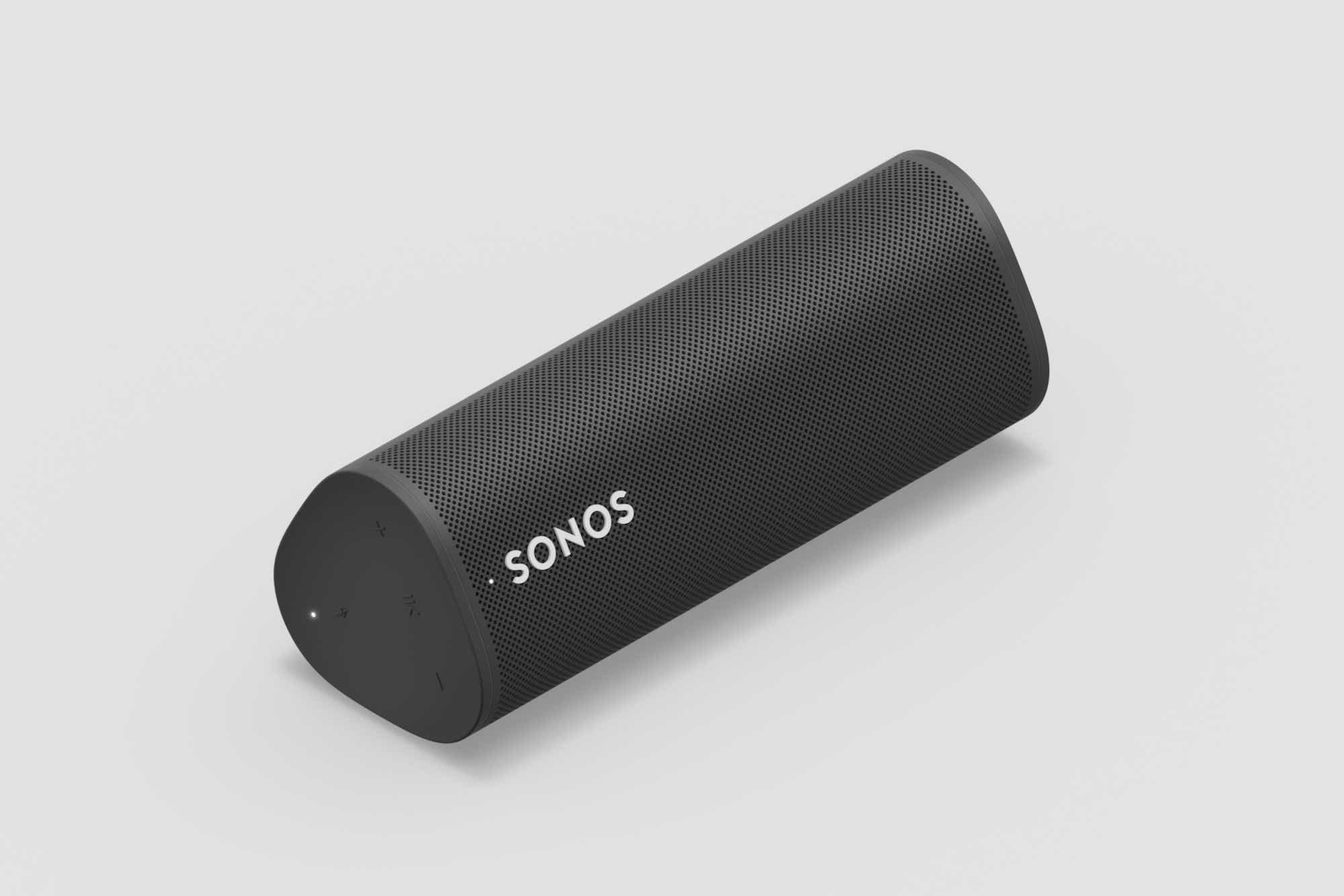
Pros
- Exceptional sound for its size
- Auto Trueplay now works over Bluetooth
- Sound Swap feature lets you “swap” music with other Sonos speakers
- Small and light, with a waterproof design
Cons
- Slow wireless charging (at least with third-party chargers)
- Sound Swap doesn’t work across Wi-Fi, Bluetooth, and AirPlay 2 modes
The Sonos Move is a better-sounding portable smart speaker, but the Sonos Roam is a lot more practical when you want to take your music on the go. It’s not a big deal to take the Move out on the patio, but stuffing it in a backpack and taking your tunes on a hike? You’re going to want to Roam for that. The Roam also costs a lot less than the Move. Don’t get us wrong, we absolutely love the Move, but when you want to roam, grab the Roam.
Sonos Move 2 — Best-sounding portable smart speaker
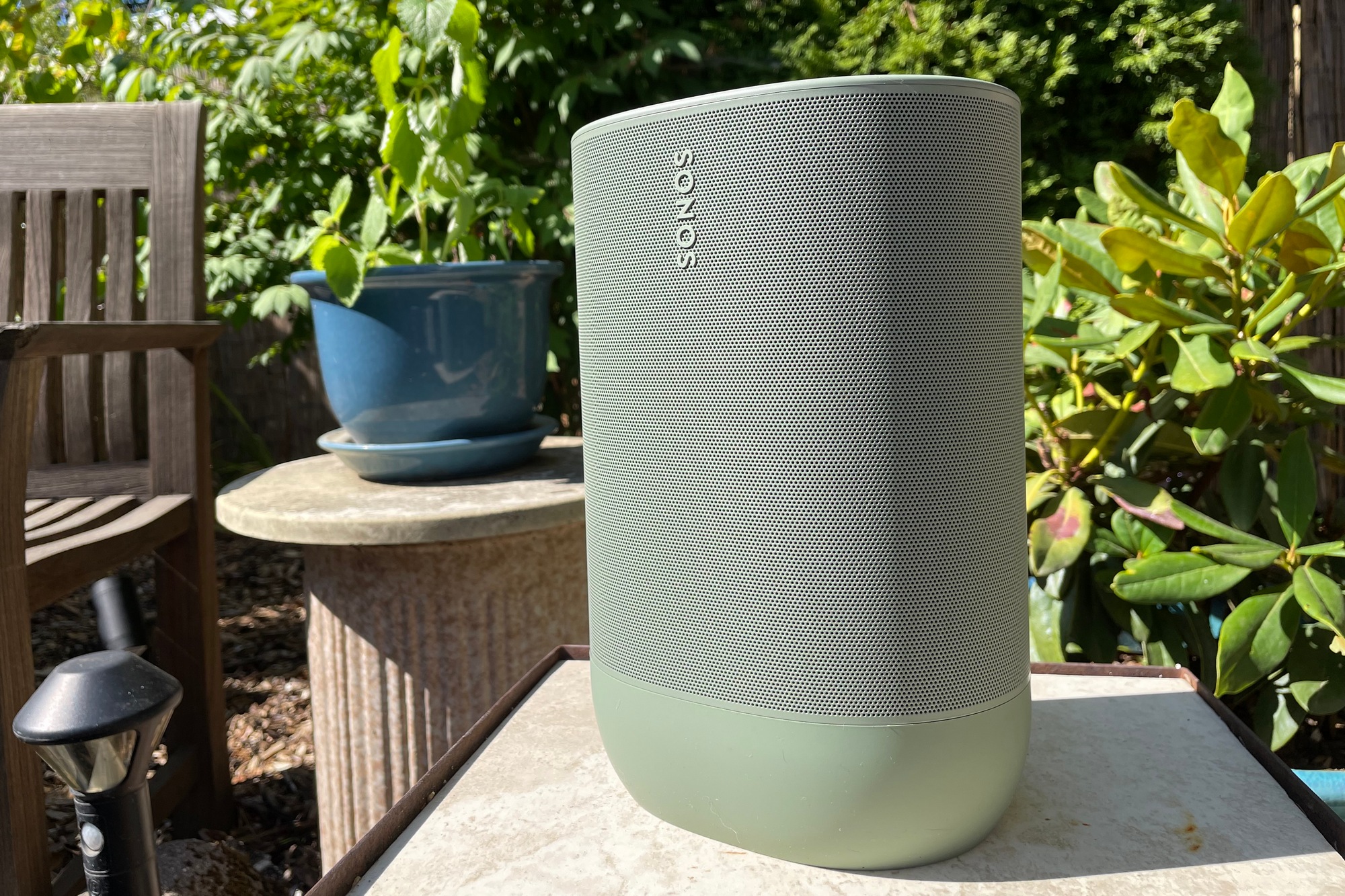
Pros
- Excellent audio performance—in stereo!
- Wi-Fi and Bluetooth connectivity—simultaneously!
- Very wide sound stage
- Incredibly long battery life
Cons
- Still no support for hi-res Bluetooth codecs
- Still best described as luggable
- $50 more expensive than the already pricey original
Sonos didn’t need to go back to the drawing board to design a better portable speaker, but I’m glad they did. The Move 2 sounds better than the original, produces a wider sound stage than the original, and offers twice as much battery life as the original. And those are just the top-line improvements.
Amazon Echo Show 10 (3rd Gen) — Best smart display
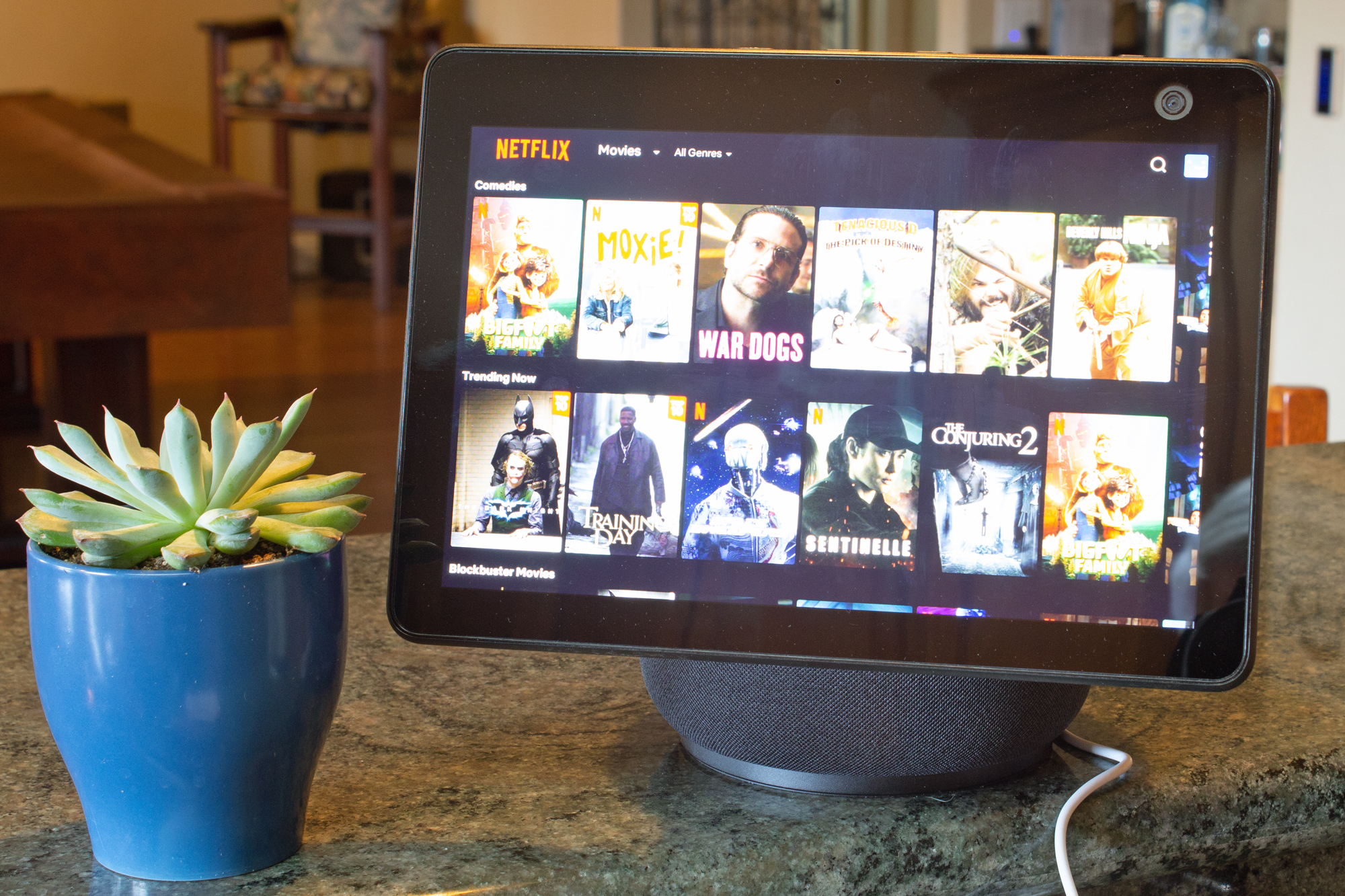
Pros
- Display can automatically rotate so it's always facing you
- Significant improvements in display brightness and image quality
- Strong home security features, including Alexa Guard and the subscription-based Alexa Guard Plus
- Very good audio performance
Cons
- You might find the tracking feature to be creepy (it can be disabled)
- Wi-Fi and Zigbee radios onboard, but there’s no Z-Wave or Thread support
- Needs at least 5 inches of clearance all the way around if it’s to fully rotate
The Amazon Echo Show (3rd Gen) features a 10.1-inch display that tracks your movement and rotates so that it always faces you. Amazon’s AZ1 Neural Edge processor tracks your movement right on the device, enhancing your privacy by not uploading your image to the cloud. It has a high-quality display and a very good audio system. As with most of its more-expensive Echo devices, there’s an integrated Zigbee smart home hub, plus a radio that taps into Amazon’s new Sidewalk neighborhood network technology. If you want an even bigger display, consider the Echo Show 15, but read our Echo Show 15 review to understand why we didn’t pick that model in this category.
Google Nest Hub Max — Best smart display, runner-up

Pros
- Impressive audio quality
- Excels as a digital photo frame
- Built-in Nest camera
- Google Assistant is one of the smartest assistants we’ve tried
Cons
- No physical camera shutter
- No analog audio output
- Google Assistant’s smart home compatibility still lags Alexa
The Google Nest Hub Max delivers great sound, fabulous picture quality, and tight integration with the Google ecosystem. Alexa is still the superior digital assistant when it comes to smart home compatibility, but that advantage won’t last forever.
What can smart speakers do?
With the exception of Amazon’s Echo, smart speakers are powered by the same digital assistants used with smartphones. Siri comes from the iPhone, Google Assistant comes from Android phones, and Cortana from Microsoft’s now-dead Windows Phone platform (Cortana is nearly just as dead). Alexa was created exclusively for the Amazon Echo, but can now be found in a host of other devices, ranging from the Ecobee Smart Thermostat to the Leviton Decora Smart Voice Dimmer.
At its most basic, a digital assistant is cloud-based software that understands natural language voice commands, performing tasks and fetching information for you. In the real world, digital assistants aren’t quite as sophisticated as that. While you don’t need to talk like a robot—e.g., “Alexa, set timer, 20 minutes”—they do get confused easily, and you’ll hear a fair amount of responses such as “Sorry, I don’t know that one” (that’s an Alexa phrase, incidentally) when you trip them up. The cool thing is that the algorithms powering digital assistants can learn over time and become better at predicting what you need.
Here are just a few of the things that most smart speakers can do (you can add “and more!” to the end of each bullet list):
Entertain
- Stream music over Wi-Fi
- Stream music over Bluetooth (most models)
- Work with Chromecast devices (Google Home models)
- Control your TV
- Stream music to multiple speakers (multi-room audio)
- Play games
- Stream videos (models with displays)
Retrieve news and information
- News headlines
- Weather forecasts
- Traffic reports
- Date and time
- Wikipedia entries
Manage your schedule
- Set appointments
- Provide reminders
- Serve as an alarm clock
- Maintain to-do lists
Help in the kitchen
- Recite recipes (and show them on models with displays)
- Set multiple timers
- Get measurement conversions (“How many cups are in one quart?”)
- Maintain shopping lists
- Set the temperature for a sous vide cooker
- Get nutrition information (“How many calories are in an apple?”)
Contact friends and family
- Make and receive phone calls (video calls on models with displays)
- Serve as an in-home intercom
- Send text messages
Control your smart home *
- Turn your lights on and off (and dim them)
- Adjust your smart thermostat
- Manage your smart sprinkler controller
- Close your garage door
- Lock your smart deadbolt
- Arm your home security system
- Stream video from your home security camera (models with displays)
- Work with IFTTT
* There are caveats when it comes to using a smart speaker for home control. Smart home devices that can be controlled via Wi-Fi don’t require any other hardware. Products that use the Zigbee or Z-Wave protocols depend on the presence of a smart-home hub, such as a Samsung SmartThings. Amazon’s higher-priced Echo models are exceptions to that rule, because they have an integrated smart home controller (although it’s limited to Zigbee)
How to choose the right smart speaker
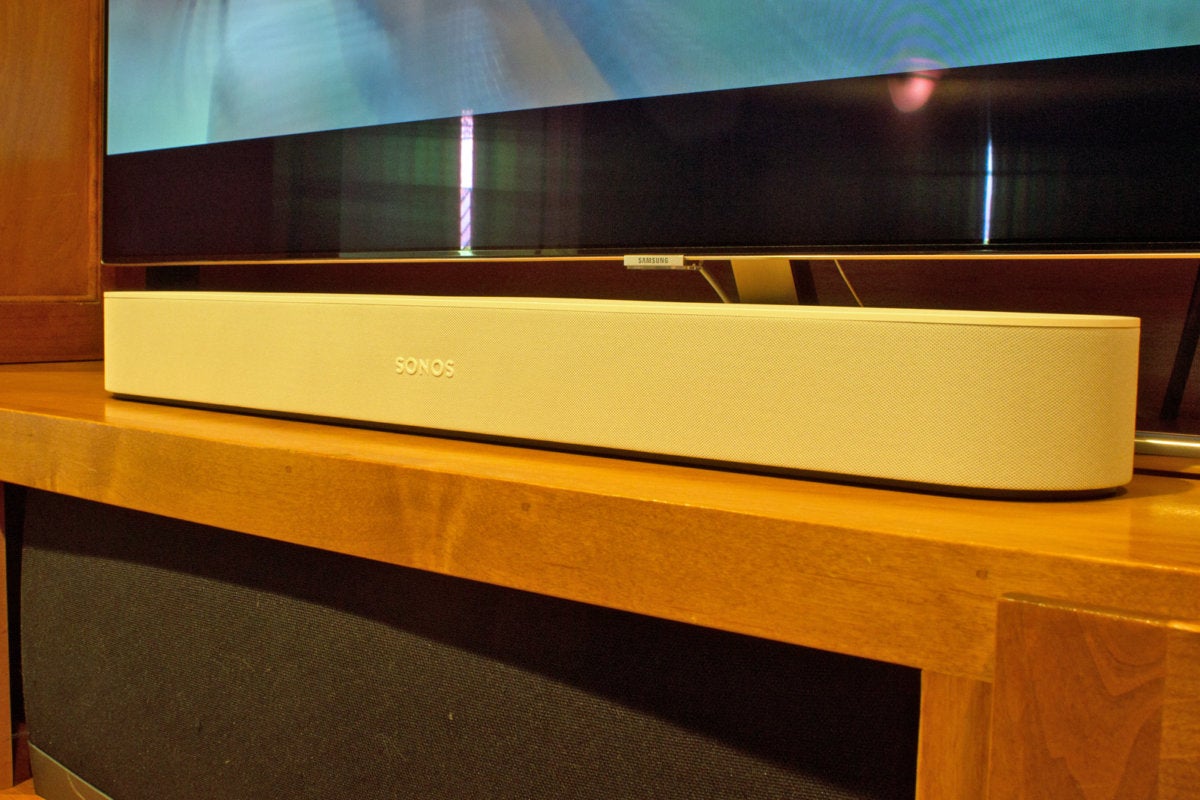
An increasing number of soundbars double as smart speakers. The Sonos Beam can be configured with either Amazon Alexa or Google Assistant, but not both at the same time.
In a perfect world, smart speakers and smart displays would be interoperable, so you could buy one brand because it’s better for music, another brand because it’s the best for smart home control, and a third because it’s superior for retrieving general information from the internet. That’s not how it works in the real world. Once you commit to one platform, you’ll want to stick with it.
On the upside, choosing one brand of smart speaker over another generally won’t tie you into that brand’s entire ecosystem. Buying an Amazon Echo, for instance, won’t limit you to subscribing to Amazon’s music services—you can also use it with Spotify, Pandora, Qobuz, SiriusXM radio, and lots of other services. And even if you have a smart home system from one company, you can use voice commands to control smart home products that would be otherwise incompatible with that system—provided those devices are compatible with your digital assistant of choice.
That said, if you’re wedded to Google Play Music, streaming music from your account to an Amazon Echo is not perfectly seamless (the same goes for streaming music from Amazon’s services to a Google Home). And there are some major coexistence exceptions: Google is currently blocking its YouTube videos from appearing on the Echo Show and Echo Spot devices, for instance (although you can get there using a web browser on an Echo Show), and Apple’s HomePod will stream music only from Apple Music (or other services from a mobile device using AirPlay, but that ties up your mobile device). If you plan to mix and match third-party products with your smart speaker, do the research to make sure they’ll work together.

